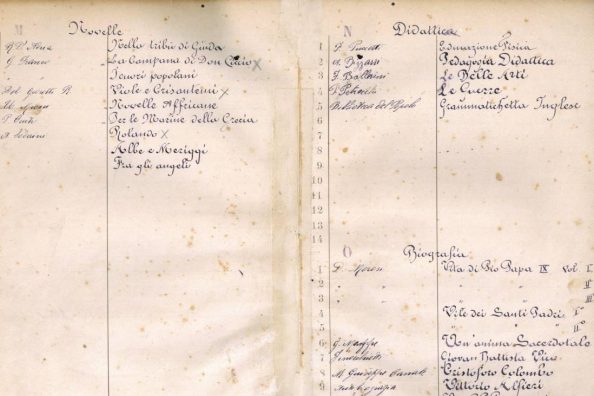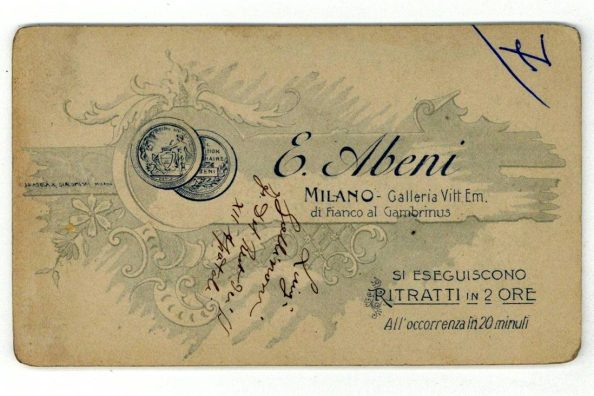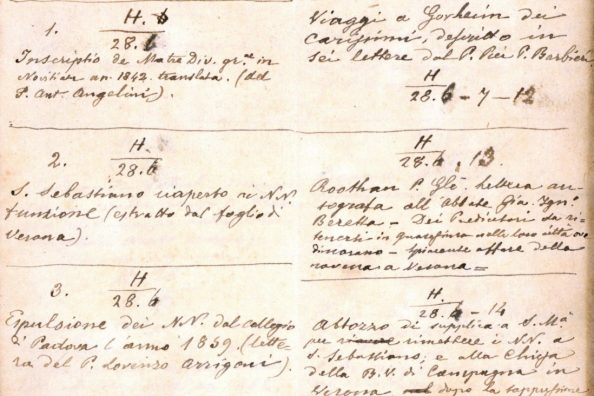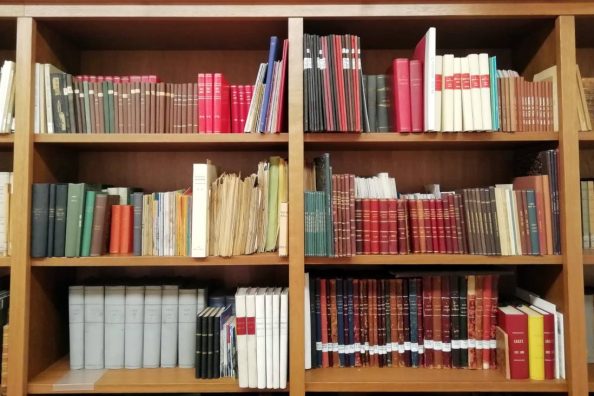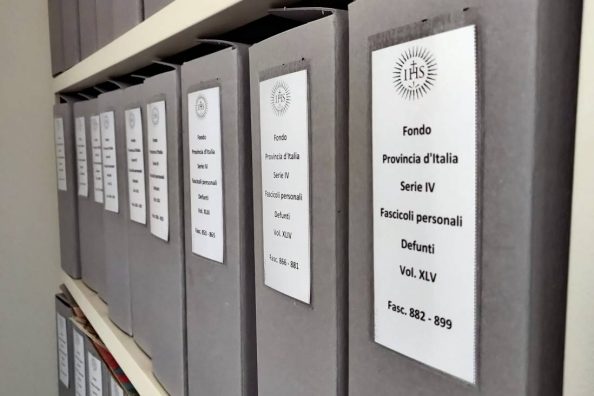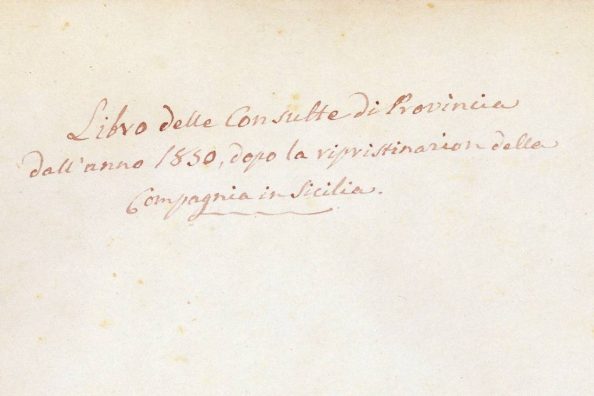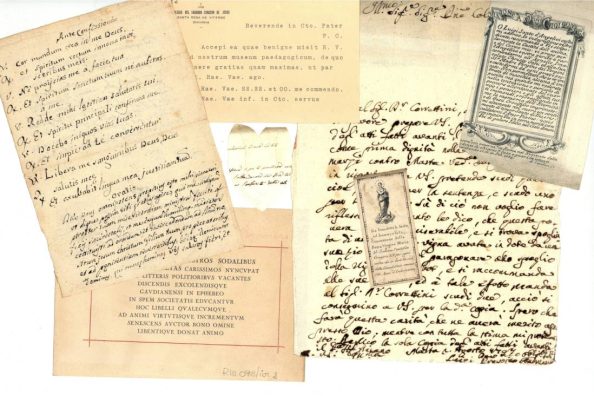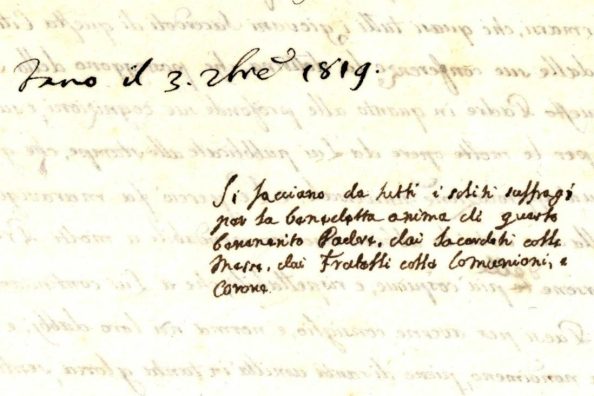Architect Giulio Pediconi, the Massimo and a project for the Vatican Art Gallery
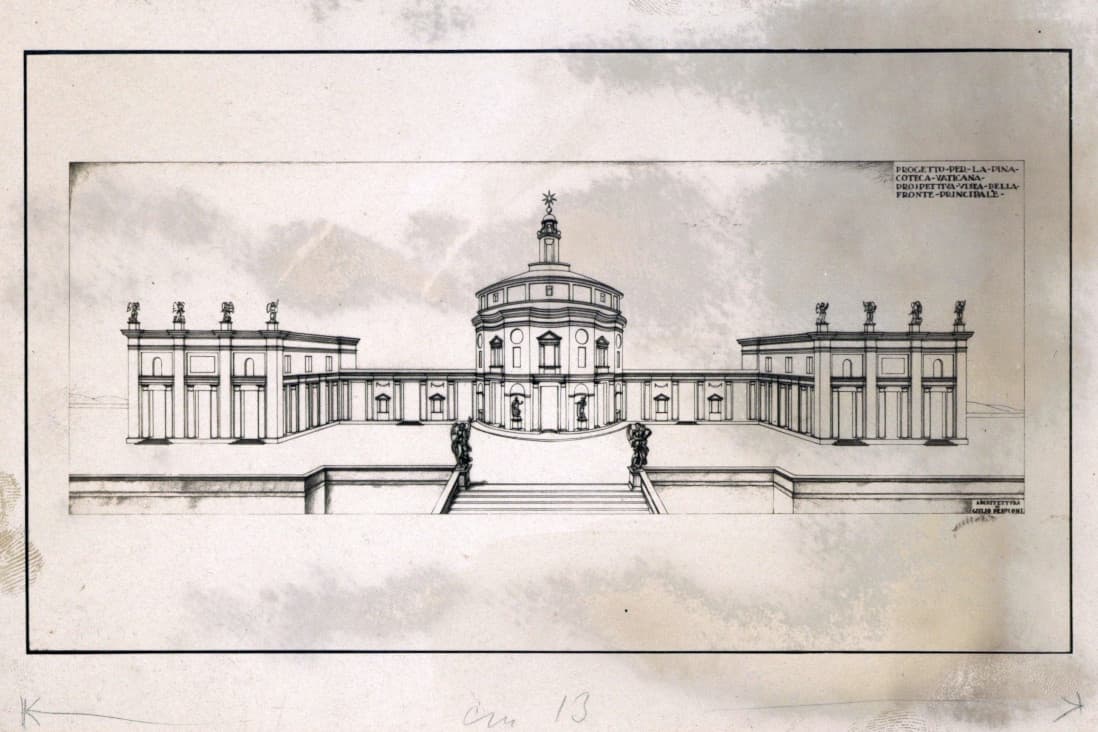
During the reorganisation of the photographic series of the Istituto Massimo in Rome, among the photos of class groups, outings, Communions, professors and Jesuits, we also found several photographs of a project for the Vatican Picture Gallery signed by architect Giulio Pediconi, a former student of Istituto Massimo.
The small documentary core consists of seven photographs, depicting drawings and plans for the Vatican Art Gallery. One of these bears the caption “Architecture by Giulio Pediconi”; the accompanying photo shows one of these drawings.
In addition to the technical drawing, one can also appreciate the author’s classical taste expressed in the decorations that soften the façade.
Beltrami and the final design
It only takes a simple check to ascertain that the architecture of the Vatican Art Gallery, however, does not correspond to that of the project in question. The building was in fact designed by Luca Beltrami, to provide a home for the collection of paintings owned by the Holy See, and was inaugurated on 27 October 1932.
Therefore the many tourists who visit the Vatican Museums, of which the Pinacoteca is an integral part, admire a structure by Beltrami, not Pediconi.
Who was Giulio Pediconi then? And why is that project, which was never realised, among the Massimo’s papers?
Architect Giulio Pediconi and the Massimo
By conducting research, it was possible to understand the connection between the photos and the Massimo: Giulio Pediconi, together with other family members, Paolo, Luigi, Mario, Giovanni – perhaps his brothers, cousins or simply homonyms – attended Istituto Massimiliano Massimo, enrolled at the technical institute and then at the high school. Born on 31 January 1906, he had been enrolled at the Maximus from 1917 to the mid-1920s, later entering La Sapienza University in Rome.
There is also an indirect link that ties him once again to the Society of Jesus. Pediconi in fact knew Clemente Busiri Vici, a member of a well-known family of architects, who would support him in his choice of architectural studies. Father Giuseppe Massaruti, a professor at the Massimo in the same years in which Pediconi was enrolled, was Andrea Busiri Vici’s nephew, as the Jesuit himself recalls in his personal diaries.
It is likely that Pediconi, a former pupil of the school, sent Massimo, or his professor Fr. Massaruti directly, a copy of the project. We know from Massaruti’s papers that he had maintained contact with many former pupils, whom he had married, baptised their children, and received photographs from the front or from the families of those who had unfortunately passed away.
After attending Istituto Massimo, Pediconi graduated in 1931, discussing his thesis on this very project for the Vatican Picture Gallery, which Beltrami inaugurated the following year.
Once graduated, Giulio Pediconi began a long and brilliant career as an architect and architecture professor.
The fonds produced by the architectural studio of Giulio Pediconi and his colleague Mario Paniconi are today kept at the Central State Archive, declared of special historical archival interest since 1998.
An itinerary of Rome among Pediconi’s works
Various testimonies of the architect’s work remain today in Rome and in many other Italian cities. We can attempt an itinerary in the Urbe to admire some of the buildings designed by architect Pediconi.
If you walk down Via dell’Amba Aradam, from Piazza S. Giovanni in Laterano towards Porta Metronia, just before turning right to take Via della Navicella, on the right-hand side you can admire a large house, characterised by an elliptical side that accompanies the curve, the last building on the street before turning. That house was designed by Giulio Pediconi.
If, on the other hand, you descend from Piazza S. Giovanni towards Via Merulana, you will pass in front of the Antonianum Athenaeum, also designed by Pediconi and Paniconi.
Going back a few kilometres, in Centocelle, from Piazza dei Mirti you can admire to the church of S. Felice da Cantalice. This too is a testimony to the early work of the architect Pediconi who signed the project; the church was completed in 1934.
Other works by the two architects mentioned in Pediconi’s Biographical Dictionary entry can also be admired in Rome: the church of the S. Famiglia al Portuense, the church of the Sacred Hearts of Jesus and Mary, the church of S. Gregorio VII, and the parish church of S. Giuseppe Cafasso al Prenestino.
We hope that this small discovery will be of interest to all those who study the life of this architect or the proposals submitted for the construction of the Vatican Pinacoteca.
What we have recounted today is one of many small discoveries in the archive. Perhaps this information may be valuable to the family of Architect Pediconi, who can learn about a further fragment of his history, and for all Romans and non-Romans who daily lay their eyes on the buildings designed by this architect and his colleague.

